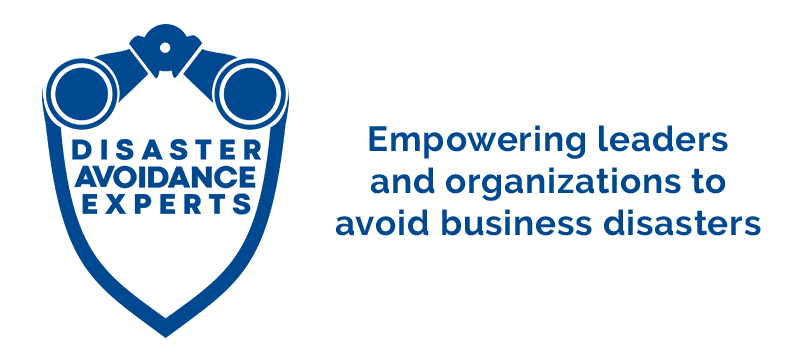Gen AI Outperformed Our Expectations

Tammy Kenber, Chief Human Resources Officer at UC Davis and UC Davis Health, doesn’t strike you as someone prone to hyperbole. Yet when she described her team’s early experiences with generative AI in her interview with me, her voice carried the tone of someone genuinely surprised by the results. “It’s way better than I expected it to be,” she admits, reflecting on the university’s integration of Gen AI across certain workflows in human resources and healthcare operations. “It’s been very positively received by the majority of those using it.”
For a public research university with nearly 40,000 employees, straddling both an academic institution and an expansive health system, digital transformation is never simple. Yet UC Davis’s approach to AI demonstrates a level-headed, methodical embrace of what many still consider a disruptive technology. With thoughtful governance, a clear focus on employee experience, and a relentless attention to privacy and ethics, UC Davis is crafting a blueprint for how large institutions can responsibly harness the power of AI—without losing their soul in the process.
Building AI Tools Within the Firewall
AI is now deeply embedded in the university’s daily operations. The most visible impact has been the transformation of what Kenber calls “Aggie Service,” the university’s Salesforce-based employee case management platform. This is where HR, IT, and other administrative teams respond to staff employment issues and process all employment related transactions and service requests. UC Davis infused this system with predictive AI capabilities, giving it both a facelift and a smart assistant function.
“When employees log in and start documenting their issue, the AI now suggests likely solutions based on past resolved cases,” Kenber explains. “We’ve just started using it, so we don’t yet have long-term metrics yet, but early signs suggest it’s going to reduce the number of cases significantly.”
Kenber’s team also developed a second AI tool housed entirely within UC Davis’s digital infrastructure—again, avoiding public AI models. This one answers policy-related questions from staff, parsing the complex web of University of California guidelines with speed and accuracy. “We’re part of a large system, and that means a lot of policies,” she says. “This tool helps employees get clarity fast, without needing to email five people.”
The decision to keep everything in-house wasn’t just a technical preference—it was a non-negotiable requirement. “Security and data privacy were our primary concerns,” says Kenber. “We needed something that lived entirely within the UC Davis firewall.” That’s a common refrain among education and healthcare leaders, particularly in the public sector, where the margin for error with sensitive data is razor thin.
Healthcare Adoption: Eye Contact and Efficiency
While administrative use cases for AI are growing, perhaps the most human-centered impact of the technology has emerged in UC Davis Health’s clinical setting. The organization has deployed a Gen AI-powered documentation assistant for physicians, allowing them to focus on patient interaction while the system captures and summarizes visit notes in real time.
“The doctor or physician’s assistant will ask the patient’s permission to use the tool at the beginning of the visit,” Kenber explains. “Then the AI listens and generates a summary, which becomes part of the medical record. It frees the physician to maintain eye contact and really engage with the patient.”
Initial skepticism from clinicians was expected. Would the tool miss critical information? Could it interpret the nuance of human interaction? But the results quickly defused those doubts. “It’s really effective,” she says. “It surprised many, just how good it was. The resistance has started to fade simply because the tool has been highly effective and feedback outstanding.”
And because this application operates in a domain where privacy isn’t optional but regulated—HIPAA compliance was critical. Kenber emphasizes that no tool can be deployed without going through UC Davis’s extensive vendor risk assessment and legal review processes. “We have an information security office, and our attorneys were involved every step of the way,” she notes. “Nothing moved forward without thorough vetting.”
A Culture of Cautious Innovation
Despite the momentum, UC Davis hasn’t lost sight of the ethical and practical dilemmas that come with AI. As Kenber acknowledges, higher education has not always been quick to embrace technological change—especially one so closely tied to fears about academic dishonesty and job displacement.
“We’re seeing it being used for everything—from HR to marketing to compliance,” she says. “But there’s still a lot of uncertainty about where to draw the line. Was something written by a person? Was it AI-assisted? And how do we even know?”
These concerns underscore why governance matters. While existing structures are in place across the UC system, Kenber notes that UC Davis has also established its own AI council to ensure multi-stakeholder oversight. Yet even with these guardrails, formal rules around AI are still being developed. “We’re in the early stages,” she admits. “The tools are evolving daily, and the policies haven’t fully caught up.”
That’s why adaptability is baked into their approach. Kenber sees Gen AI not as a magic wand but as a fast-moving current that demands agility and cross-functional coordination. Her team is already looking to expand AI’s footprint, including in job description creation tools. The only delay? Internal IT capacity. “We need some programming support to flip the switch,” she says, chuckling. “I have a ticket in right now. I suspect a lot of departments do.”
The Road Ahead: Bigger, Faster, Smarter
What stands out most in UC Davis’s journey is not just the breadth of Gen AI integration—it’s the pragmatism behind it. Kenber and her colleagues aren’t evangelizing AI. They’re implementing it thoughtfully, carefully, and always with a focus on people. In a landscape where some organizations race ahead without a plan and others freeze in fear, UC Davis has found a middle path. And the results, at least so far, have defied expectations.
“There’s no question it’s going to keep growing,” Kenber says. “We’re asking IT for more help to operationalize it, and that’s just within HR. Other departments are doing the same. It’s happening fast, but it’s also happening responsibly.”
That balance—between speed and stewardship, between excitement and ethics—may ultimately be UC Davis’s most powerful innovation. And as generative AI continues to reshape the workplace, that kind of leadership will matter more than ever.
Key Take-Away
Every AI deployment undergoes rigorous legal, privacy, and information security reviews, especially in regulated domains like healthcare (HIPAA compliance). Share on XImage credit: LinkedIn Sales Navigator/pexels
Gen AIDr. Gleb Tsipursky was lauded as “Office Whisperer” and “Hybrid Expert” by The New York Times for helping leaders use hybrid work to improve retention and productivity while cutting costs. He serves as the CEO of the boutique future-of-work consultancy Disaster Avoidance Experts. Dr. Gleb wrote the first book on returning to the office and leading hybrid teams after the pandemic, his best-seller Returning to the Office and Leading Hybrid and Remote Teams: A Manual on Benchmarking to Best Practices for Competitive Advantage (Intentional Insights, 2021). He authored seven books in total, and is best know for his global bestseller, Never Go With Your Gut: How Pioneering Leaders Make the Best Decisions and Avoid Business Disasters (Career Press, 2019). His cutting-edge thought leadership was featured in over 650 articles and 550 interviews in Harvard Business Review, Forbes, Inc. Magazine, USA Today, CBS News, Fox News, Time, Business Insider, Fortune, and elsewhere. His writing was translated into Chinese, Korean, German, Russian, Polish, Spanish, French, and other languages. His expertise comes from over 20 years of consulting, coaching, and speaking and training for Fortune 500 companies from Aflac to Xerox. It also comes from over 15 years in academia as a behavioral scientist, with 8 years as a lecturer at UNC-Chapel Hill and 7 years as a professor at Ohio State. A proud Ukrainian American, Dr. Gleb lives in Columbus, Ohio. In his free time, he makes sure to spend abundant quality time with his wife to avoid his personal life turning into a disaster. Contact him at Gleb[at]DisasterAvoidanceExperts[dot]com, follow him on LinkedIn @dr-gleb-tsipursky, Twitter @gleb_tsipursky, Instagram @dr_gleb_tsipursky, Facebook @DrGlebTsipursky, Medium @dr_gleb_tsipursky, YouTube, and RSS, and get a free copy of the Assessment on Dangerous Judgment Errors in the Workplace by signing up for the free Wise Decision Maker Course at https://disasteravoidanceexperts.com/newsletter/.

